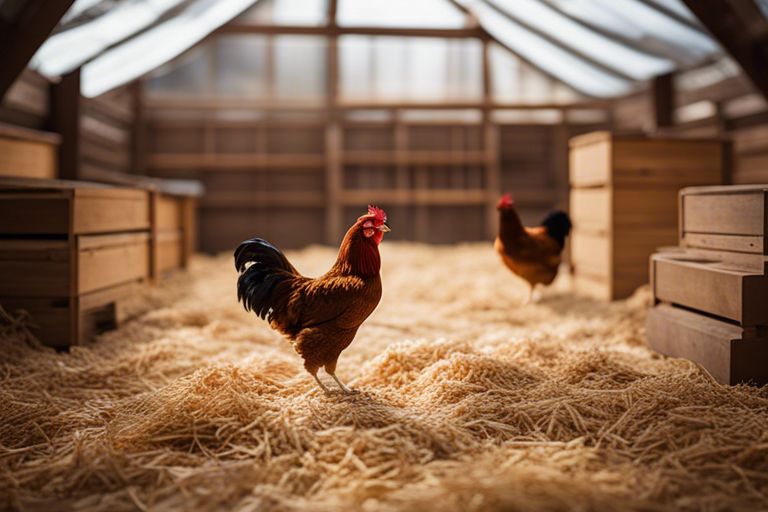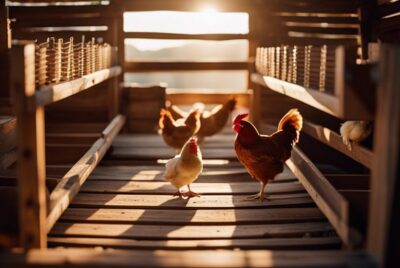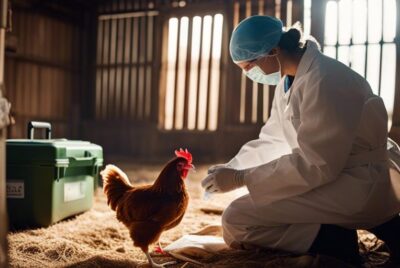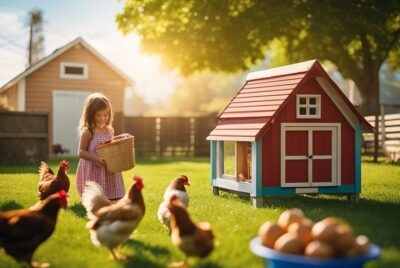Chicken Coop Flooring – What Works Best?
When it comes to creating a comfortable and healthy environment for your flock, the type of flooring in your chicken coop plays a crucial role. Coop flooring not only provides insulation and support but also impacts sanitation and maintenance. From traditional options like dirt and straw to modern solutions such as rubber mats and wood shavings, choosing the right flooring is essential for promoting your chickens’ well-being. In this blog post, we will explore various chicken coop flooring options, their pros and cons, and ultimately determine what works best for your feathered friends.
Types of Chicken Coop Flooring
Your chicken coop flooring is an essential element that directly impacts the health and well-being of your flock. Choosing the right type of flooring is crucial to ensure a clean, comfortable, and safe environment for your chickens. In this chapter, we will explore the different types of chicken coop flooring options available, including natural and artificial choices.
It is important to consider factors such as ease of cleaning, durability, insulation, and cost when selecting the best flooring for your chicken coop. By understanding the pros and cons of each type of flooring, you can make an informed decision that suits both your chickens’ needs and your preferences.
Natural Flooring Options
Natural flooring options for chicken coops include materials such as sand, straw, and grass. These materials are readily available, inexpensive, and provide a comfortable surface for your chickens to walk and rest on. Sand, in particular, is an excellent option as it allows for easy cleaning and drainage of moisture.
Natural flooring options are also beneficial for your chickens’ health, as they allow for dust bathing and scratching behaviors. However, it is essential to regularly replenish these materials to maintain a hygienic environment in your chicken coop. Additionally, natural flooring may not be as durable as artificial options and may require more frequent replacement.
Artificial Flooring Options
For those looking for a more durable and low-maintenance flooring option, artificial materials such as vinyl, linoleum, or rubber tiles are popular choices for chicken coops. These materials are easy to clean, resistant to moisture, and provide a smooth surface that is gentle on your chickens’ feet.
One of the advantages of artificial flooring options is that they can be easily sanitized to prevent the buildup of bacteria and parasites. Additionally, these materials are long-lasting and offer better insulation against cold weather. It is essential to ensure that artificial flooring is properly installed to prevent any gaps or sharp edges that could potentially harm your chickens.
A combination of natural and artificial flooring options can also be utilized in your chicken coop. For example, using sand as the base flooring material with rubber tiles in high-traffic areas can provide the benefits of both types of flooring. Ultimately, the best choice of chicken coop flooring will depend on your specific needs and preferences, as well as the climate and conditions in which your chickens are raised.
Pros and Cons of Common Flooring Materials
While choosing the right flooring for your chicken coop, it’s essential to consider the pros and cons of different materials. Here, we break down the key points for some common options to help you make an informed decision.
| Material | Pros and Cons |
| Wood Shavings | Pros: Absorb moisture, provide insulation. Cons: Require frequent replacement. |
| Straw | Pros: Good insulation and soft for nesting. Cons: Can be messy and attract pests. |
| Sand | Pros: Easy to clean, allows for dust bathing. Cons: Can be expensive to initially set up. |
| Gravel | Pros: Durable and drains well. Cons: Not comfortable for chickens to walk on. |
| Rubber Mats | Pros: Easy to clean, comfortable for chickens. Cons: Can be costly upfront. |
| Vinyl | Pros: Waterproof and easy to sanitize. Cons: Can be slippery for chickens. |
Wood Shavings and Straw
With wood shavings, you get a flooring option that is excellent at absorbing moisture and providing insulation for your flock. However, it’s essential to note that wood shavings need to be replaced frequently to maintain cleanliness and freshness. On the other hand, straw offers good insulation and a soft surface for nesting, but it can get messy quickly and attract pests.
Sand and Gravel
Wood chips are commonly used in chicken coops due to their low cost and availability. However, they can get messy quickly and break down over time, requiring regular replacement. On the other hand, gravel provides excellent drainage and durability but may not be the most comfortable option for chickens to walk on.
A well-draining base layer of sand topped with a layer of gravel can offer a durable and low-maintenance flooring solution for your chicken coop. Sand allows for easy cleaning and dust bathing, while gravel provides stability and aids in drainage.
Rubber Mats and Vinyl
Wood chips are commonly used in chicken coops due to their low cost and availability. However, they can get messy quickly and break down over time, requiring regular replacement. On the other hand, gravel provides excellent drainage and durability but may not be the most comfortable option for chickens to walk on.
When considering rubber mats or vinyl flooring for your chicken coop, it’s important to weigh the benefits of easy cleaning and comfort against the potential drawbacks of initial cost and slipperiness. Rubber mats are easy to clean and provide a comfortable surface for chickens, while vinyl is waterproof and simple to sanitize, though it can pose a slipping hazard for your feathered friends.
Maintenance and Hygiene
Unlike other areas of your chicken coop, the flooring requires special attention when it comes to maintenance and hygiene. A properly maintained coop floor is essential for the health and well-being of your flock.
Cleaning and Disinfecting Your Coop Floor
One of the most important aspects of maintaining a clean coop floor is regular cleaning and disinfecting. Start by removing all bedding and droppings from the floor. Use a shovel or rake to scoop out any solid waste and debris. Next, sweep the floor to remove any remaining dirt and dust.
After cleaning, it’s crucial to disinfect the coop floor to kill any harmful bacteria or parasites. Use a poultry-safe disinfectant recommended for chicken coops and follow the manufacturer’s instructions for dilution and application. Allow the disinfectant to sit for the recommended amount of time before rinsing the floor thoroughly with clean water.
Flooring and Pest Control
One common issue that can arise with coop flooring is pest infestation. Flooring plays a crucial role in pest control as certain types of flooring can make it easier for pests like mites, lice, and rodents to thrive in your coop.
It is important to choose a flooring material that is pest-resistant and easy to clean. Avoid materials like wood shavings or straw that can harbor pests and bacteria. Instead, opt for solid flooring options like concrete, linoleum, or rubber mats that are easier to clean and disinfect.
Flooring Adaptability and Comfort
When it comes to chicken coop flooring, adaptability and comfort are key factors to consider. The flooring you choose should be suitable for the different seasons and provide a comfortable environment for your flock to thrive.
Seasonal Considerations for Flooring Choices
Any flooring option you select for your chicken coop should take into account the seasonal changes that occur throughout the year. For example, during the winter months, you’ll want flooring that provides insulation to keep your chickens warm. Wood shavings or straw can be good choices as they offer some insulation against the cold. In contrast, during the summer, you’ll want flooring that allows for good ventilation to prevent overheating. Sand or dirt floors can help keep the coop cooler in hot weather.
Considering these seasonal differences when choosing your chicken coop flooring can help provide a comfortable environment for your chickens year-round. It’s important to assess the climate of your region and the specific needs of your flock to determine the best flooring option for each season.
Enhancing Chicken Comfort on Different Flooring Types
Different types of flooring can impact the comfort of your chickens in various ways. Providing a comfortable flooring surface can help prevent common issues like bumblefoot and keep your flock healthy and happy. Some flooring options, such as rubber mats or specialized poultry flooring, are designed to provide a cushioned surface that is easy on the chickens’ feet and legs.
This subsection will research into the various flooring types and their impact on chicken comfort:
- Recognizing the importance of providing a comfortable environment for your chickens
| Flooring Type | Comfort Level |
| Rubber Mats | High |
| Sand | Moderate |
| Straw | Low |
| Wood Shavings | Moderate |
| Specialized Poultry Flooring | High |
Conclusion
From above, when it comes to chicken coop flooring, there are several options to consider, each with its own pros and cons. Ultimately, the best choice will depend on factors like budget, maintenance preferences, and the specific needs of your chickens. Whether you opt for a solid surface like concrete, a natural option like dirt or sand, or a more specialized choice like wire mesh or rubber mats, keeping your chickens happy and healthy should be the ultimate goal. Remember to regularly clean and maintain your chicken coop flooring to ensure a comfortable and sanitary environment for your feathered friends.



